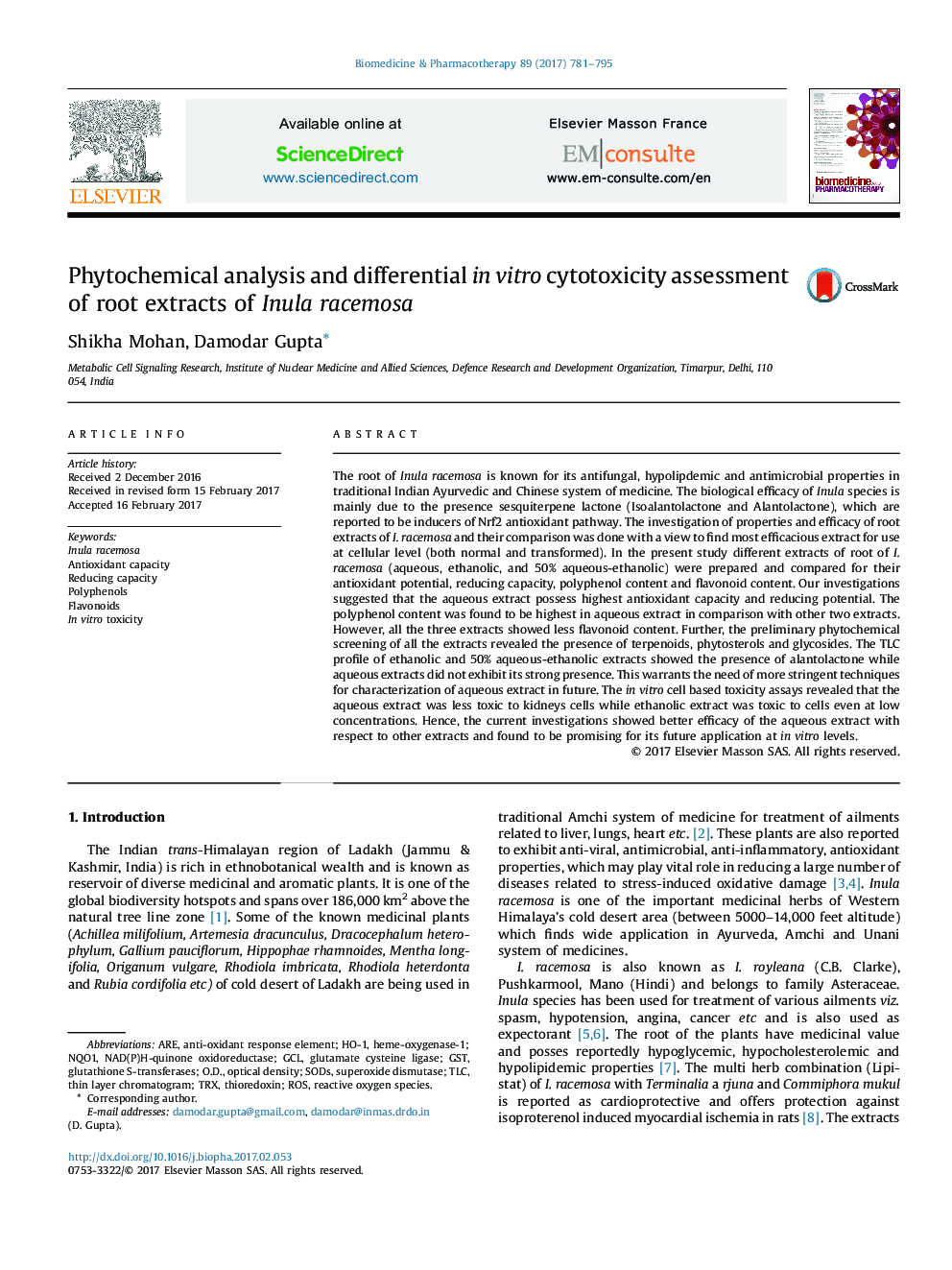| کد مقاله | کد نشریه | سال انتشار | مقاله انگلیسی | نسخه تمام متن |
|---|---|---|---|---|
| 5553301 | 1557953 | 2017 | 15 صفحه PDF | دانلود رایگان |

The root of Inula racemosa is known for its antifungal, hypolipdemic and antimicrobial properties in traditional Indian Ayurvedic and Chinese system of medicine. The biological efficacy of Inula species is mainly due to the presence sesquiterpene lactone (Isoalantolactone and Alantolactone), which are reported to be inducers of Nrf2 antioxidant pathway. The investigation of properties and efficacy of root extracts of I. racemosa and their comparison was done with a view to find most efficacious extract for use at cellular level (both normal and transformed). In the present study different extracts of root of I. racemosa (aqueous, ethanolic, and 50% aqueous-ethanolic) were prepared and compared for their antioxidant potential, reducing capacity, polyphenol content and flavonoid content. Our investigations suggested that the aqueous extract possess highest antioxidant capacity and reducing potential. The polyphenol content was found to be highest in aqueous extract in comparison with other two extracts. However, all the three extracts showed less flavonoid content. Further, the preliminary phytochemical screening of all the extracts revealed the presence of terpenoids, phytosterols and glycosides. The TLC profile of ethanolic and 50% aqueous-ethanolic extracts showed the presence of alantolactone while aqueous extracts did not exhibit its strong presence. This warrants the need of more stringent techniques for characterization of aqueous extract in future. The in vitro cell based toxicity assays revealed that the aqueous extract was less toxic to kidneys cells while ethanolic extract was toxic to cells even at low concentrations. Hence, the current investigations showed better efficacy of the aqueous extract with respect to other extracts and found to be promising for its future application at in vitro levels.
The aqueous extract of Inula racemosa is most acceptable extract among aqueous, ethanolic and 50% aqueous-ethanolic extract in terms of radical scavenging capacity, ferric reducing potential, antioxidant potential, polyphenol and flavonoid content. It is most tolerant to cells in in vitro culture and hence shall be sought for exploring the potential of Inula racemosa at in vitro and in vivo level.203
Journal: Biomedicine & Pharmacotherapy - Volume 89, May 2017, Pages 781-795